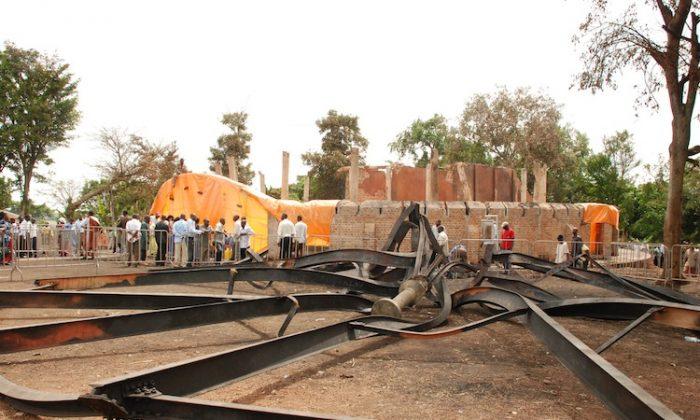NEW YORK—In hopes of creating less pollution and greenhouse gas emissions, the Port Authority and the U.S. Environmental Protection Agency (EPA) launched a new program on Wednesday to remove up to 636 of the oldest and most polluting trucks.
The older diesel trucks at the Port of New York and New Jersey will be replaced by environmentally friendly newer models.
“The result will be improved air quality in the New York metropolitan area, particularly in the communities surrounding these facilities, which have too often borne the brunt of the poor air quality and associated health impacts resulting from the use of older, high emitting trucks,” said New York state Department of Environmental Conservation Commissioner Peter Grannis in a press release.
The $28 million program is set to encourage owners of up to 636 pre-1994 drayage trucks that often serve the port to buy newer trucks. Truckers are eligible to apply for the fund if they regularly call on the Port Authority’s marine terminals.
Beginning on Wednesday, pre-applications for grants and financial assistance to cover the cost of a new truck have been available at the Truck Replacement Center at 1180 McLester St., Elizabeth, or online at www.replacemytruck.org.
Under the program, truck drivers can receive a 25 percent grant toward the total purchase of a replacement truck, which usually costs between $20,000 and $60,000. The model must be between 2004 and 2008 with an engine model year 2004 to 2007.
The remainder of the fund will be used to provide low-interest loans.
The program is partly funded by a $7 million EPA grant, with the rest coming from Port Authority funds.
“Efforts like the Port Authority’s new truck replacement program and the much broader sustainability agreement signed today will go a long way toward cutting this pollution and improving air quality and public health,” said EPA Region 2 Administrator Judith Enck.
The older diesel trucks at the Port of New York and New Jersey will be replaced by environmentally friendly newer models.
“The result will be improved air quality in the New York metropolitan area, particularly in the communities surrounding these facilities, which have too often borne the brunt of the poor air quality and associated health impacts resulting from the use of older, high emitting trucks,” said New York state Department of Environmental Conservation Commissioner Peter Grannis in a press release.
The $28 million program is set to encourage owners of up to 636 pre-1994 drayage trucks that often serve the port to buy newer trucks. Truckers are eligible to apply for the fund if they regularly call on the Port Authority’s marine terminals.
Beginning on Wednesday, pre-applications for grants and financial assistance to cover the cost of a new truck have been available at the Truck Replacement Center at 1180 McLester St., Elizabeth, or online at www.replacemytruck.org.
Under the program, truck drivers can receive a 25 percent grant toward the total purchase of a replacement truck, which usually costs between $20,000 and $60,000. The model must be between 2004 and 2008 with an engine model year 2004 to 2007.
The remainder of the fund will be used to provide low-interest loans.
The program is partly funded by a $7 million EPA grant, with the rest coming from Port Authority funds.
“Efforts like the Port Authority’s new truck replacement program and the much broader sustainability agreement signed today will go a long way toward cutting this pollution and improving air quality and public health,” said EPA Region 2 Administrator Judith Enck.




Friends Read Free